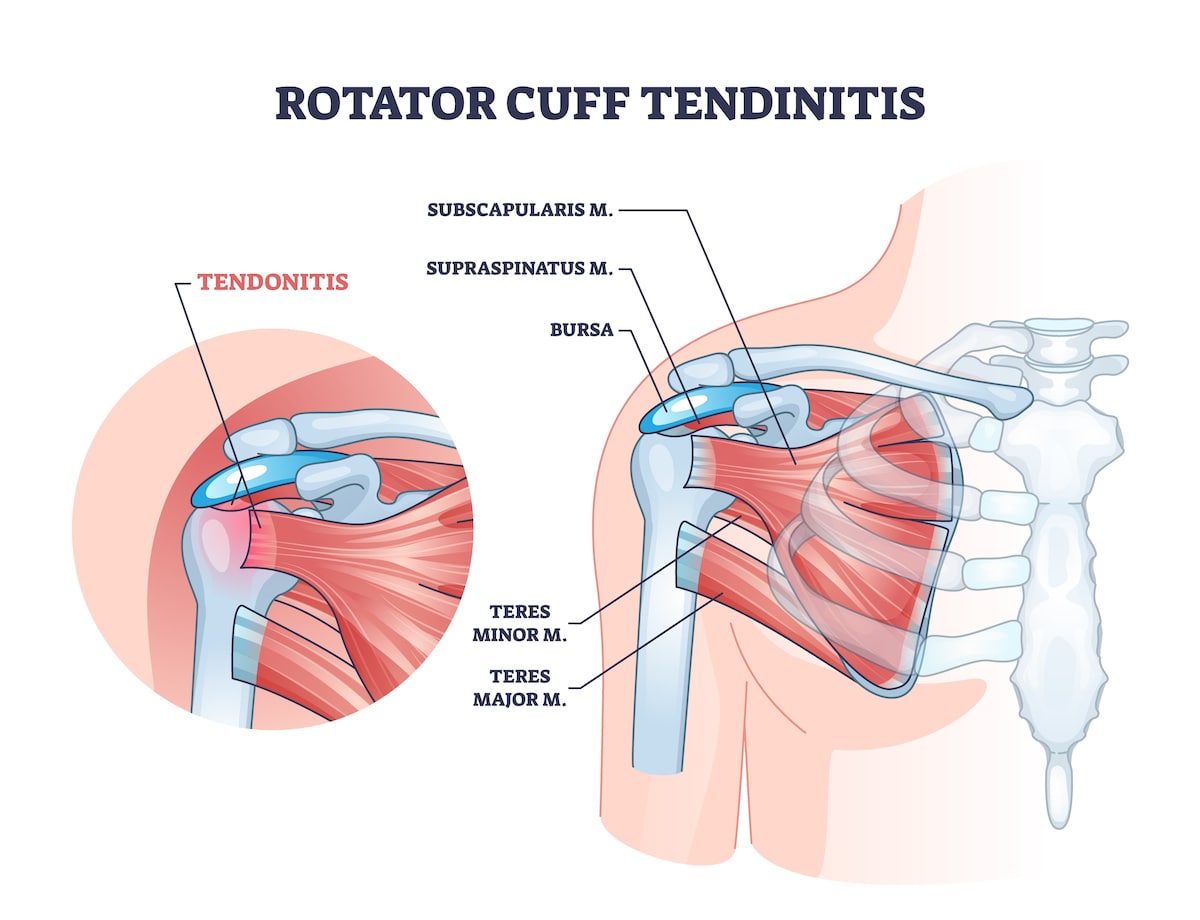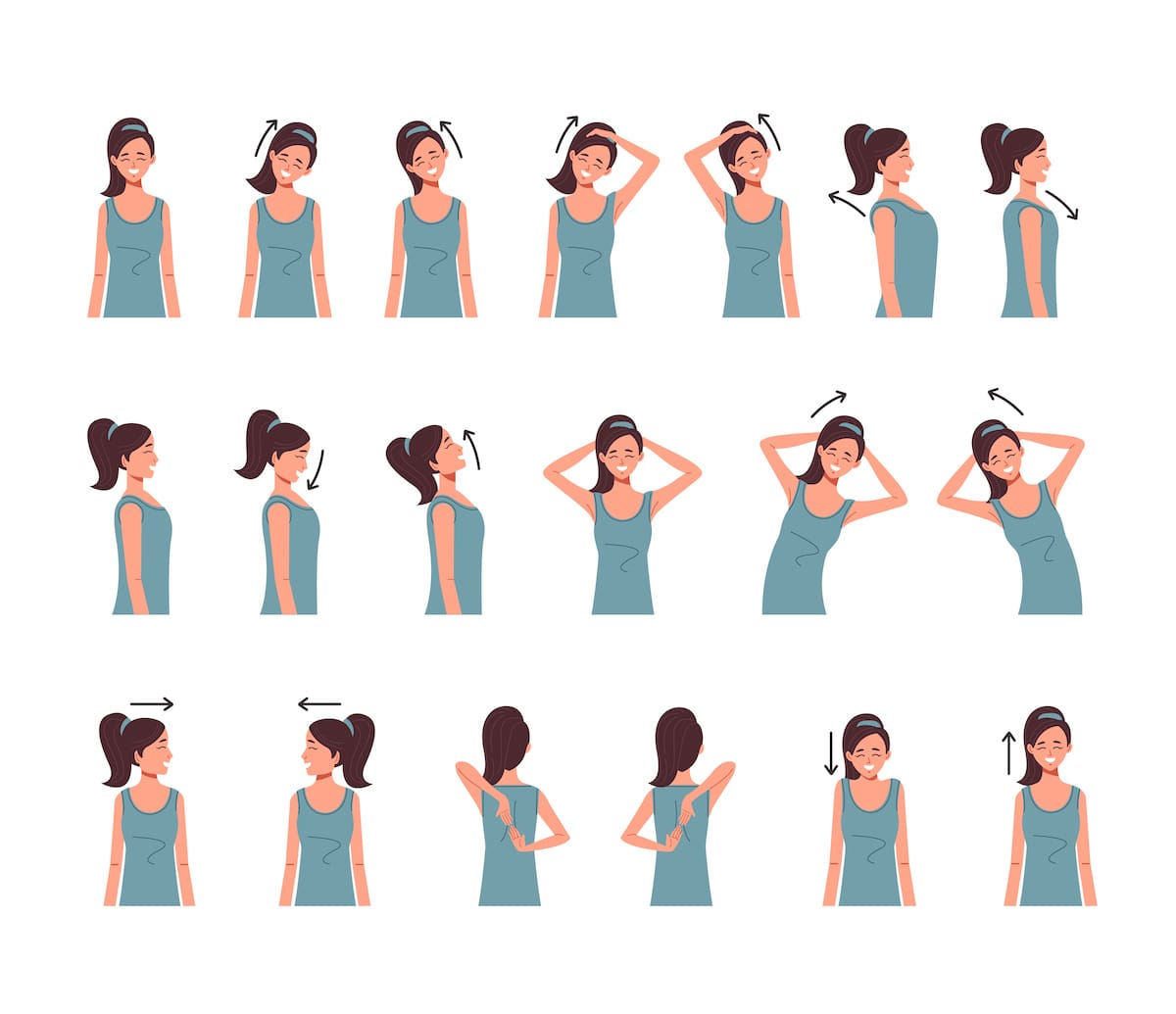8 Exercises for Shoulder Tendonitis
A focus on periscapular muscle strengthening (i.e. small rotator cuff muscles) and eccentric strengthening are important components to shoulder rehab. Eccentric strengthening is a type of training to lengthen or “elongate” the muscle which minimizes the stress across the joint to allow for less pain while building strength and mobility.
What Is Shoulder Tendonitis?
Shoulder tendonitis is a condition where the tendons in your shoulder joint become inflamed and irritated. Tendons are strong, cord-like structures that connect muscles to bones. The rotator cuff, a group of four tendons stabilizing your shoulder joint, is the most common site of tendonitis in the shoulder. However, inflammation can also occur in the biceps tendon, which runs along the front of your shoulder.

What Causes Shoulder Tendonitis?
There are various causes to tendonitis, most notably overuse injuries, such as weight-lifting, throwing/racket sports, or other repetitive overhead daily tasks. Other causes may include traumatic injury, underlying medical condition (e.g. rheumatoid arthritis), immunizations, amongst others causes.
What Are the Symptoms of Shoulder Tendonitis?
The most common symptom is pain followed by weakness, stiffness, or mechanical symptoms, such as grinding or popping of the shoulder. Check out our article on separated shoulder symptoms in case you think your condition might be a separate shoulder instead.
- Pain, especially when lifting your arm overhead or reaching behind your back.
- A dull ache in your shoulder that may worsen at night.
- Stiffness and reduced range of motion in the shoulder joint.
- Sometimes, a clicking or snapping sensation when you move your shoulder.
8 Exercises for Shoulder Tendonitis
Several exercises as outlined below can help minimize symptoms and prevent further injury.
1. Pendulums
Bend forward at the waist and allow the injured arm to hang loosely to the ground. Using your body momentum (not the shoulder itself), create gentle circular motions, moving the arm in a small clockwise circle for 10 repetitions. Circles are made from small to large, and after completion can switch to a counter-clockwise motion.
2. Cross-Body Arm Stretch
Extend one arm across the chest. Use the other arm to hook around the extended arm and hold for 10 seconds. Stretch should be felt on the back of the shoulder.

3. Scapular Squeezes
Pinch your shoulder blades together and hold for 10 seconds. Repeat 10-15 times.
4. Arm Circles
Extend arms at 90 degree angle from sides. In small circular motions move arms clockwise for 10 seconds and then switch to counter-clockwise motion. You can alternate in different size circles to maximize resistance.

5. External and Internal Rotation Stretches
External: Stand in the doorway with the shoulder & elbow bent at 90 degrees and the hand firmly on the wall. Turn the torso away from the affected shoulder to feel a stretch in the front of the shoulder.
Internal: Stand tall holding a dowel rod behind your back with two hands, palms facing out. Push the rod toward the ground. The stretch should be felt in the front of the shoulder.
6. Quadruped Shoulder Flexion Stretch
While on all fours, lift one arm off the ground and raid it forward while keeping your back straight. Keep the arm parallel to the ground. Bring the hand to the ground and alternate arms.
7. Shoulder Rolls and Shrugs
Slowly shrug your shoulders. Hold at the top and then slowly lower them down.
8. Neck Stretch
Tilt your neck toward one side and gently press on the top of your head to maximize the stretch. Alternate sides.

Exercises for Shoulder Tendonitis FAQs
Are There Any Exercises I Should Avoid With Shoulder Tendonitis?
It’s important to avoid certain exercises when you have shoulder tendonitis to prevent further inflammation and give your tendons time to heal. Here’s why you should avoid heavy weights and overhead movements:
- Heavy weights: Lifting heavy weights puts significant stress on your shoulder joint and the surrounding tendons. This stress can worsen tendonitis and delay recovery.
- Overhead movements: Exercises like military presses, overhead throws, and certain weightlifting moves require you to lift your arms above your head. These motions place excessive strain on the already inflamed tendons in your shoulder, increasing pain and potentially causing further damage.
How Long Does It Take To See Results from Exercises for Shoulder Tendonitis?
While everyone experiences healing at a different rate, you can generally expect to see some positive results from consistent shoulder tendonitis exercises within a few weeks. For milder cases, this may mean reduced pain and improved range of motion. In more severe cases, it may take 2-3 months of dedicated exercise to experience significant relief.
How Often Should I Do Exercises for Shoulder Tendonitis?
The frequency of your exercises depends on the type:
- Gentle stretches: These can be done daily to improve flexibility and reduce stiffness in your shoulder.
- Resistance training and heavier weight-lifting: Allow your shoulder 1-2 days of rest after these types of exercises. This rest period is crucial for muscle recovery and preventing further inflammation.
Always listen to your body. If an exercise causes significant pain, stop and consult with your doctor or physical therapist. They can help you create a safe and effective exercise plan tailored to your specific needs.
Besides Exercises, What Else Can I Do To Heal Shoulder Tendonitis?
Beyond therapy, alternative treatment may consist of anti-inflammatory medication, topical creams, injections, and as a last resort, surgery could be considered in some cases.
Get Treatment at Alexander Orthopaedics for Your Shoulder Tendonitis
Don’t let shoulder pain limit your life. Schedule an appointment with Alexander Orthopaedics today to find relief and get back to doing what you love.
